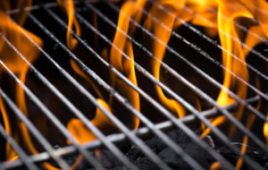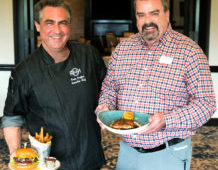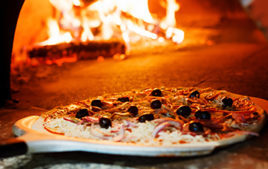Commercial kitchens come in all shapes and sizes. But the most successful ones rely on matching an operation’s culinary needs with the right type and size of oven.
There are a number of different commercial ovens to choose between, with different functions and capabilities. Before buying, consider your menu needs, explore your options, and carefully study specification sheets that list dimensions, capacities, temperature controls, gas and/or electrical requirements, venting recommendations and accessories.
Here are descriptions of the types of ovens that will likely fit your club’s needs:
Deck Ovens: Ideal for cooking, roasting, or baking, these general-purpose ovens offer a lot of capabilities in a variety of footprints. They can usually be stacked up to three ovens high, allowing chefs to cook multiple products at the same time at various temperatures. They provide superior browning for items such as chicken, fish, casseroles and, of course, pizza.
Cook & Hold Ovens: With low energy consumption and no hood ventilation needed (most of the time), these ovens are ideal for a number of applications. They are generally easy to operate, with “set it and forget it” controls and even overnight cooking capabilities. Plus, chefs can use less-expensive cuts of meat and still yield excellent results with less shrinkage. Cook-and-hold ovens come in a variety of sizes and footprints, depending on the manufacturer, and can be purchased with casters, so they can be wheeled around.
Convection Ovens: Convection ovens add forced-air movement to reduce cooking times by up to 25% and cooking temperature up to 30%. They allow chefs to cook more evenly and efficiently. Because the temperature throughout the oven is consistent, pans do not generally need to be shifted or turned during the cooking process. Convection ovens can be used to warm, roast, re-thermalize and bake as well.
Combi Ovens: Combination ovens combine convection oven and steamer capabilities into a single cooking cavity. They offer three modes of cooking: steam, circulated hot air or a combination of both (which can decrease overall cook times, reduce product shrinkage and eliminate flavor transfer when multiple items are cooked simultaneously). Some models offer additional specialty modes, using hot air and steam to defrost, poach, gently steam and warm.
Rapid-Cook/High-Speed Ovens: These ovens allow chefs to cook food rapidly without compromising quality. They combine high-speed oven technology with the convenience of both a microwave oven and conventional oven. (They generally use hot-air jets to strip away the cool layer around food.) Their compact design allows for on-demand cooking without the space, energy and food-holding requirements of a larger oven.
Conveyor Ovens: Perfect for pizza, pasta, sandwiches, baked goods and more, conveyor ovens provide a fast output. Also known as impinger ovens, these units use forced hot air technology to increase cooking speed. (Hot air is pushed by fan over a perforated plate, creating an even jet that extends across the full width of the conveyor belt.) This process allows chefs to yield higher amounts of finished products in less time, and at lower temperatures, than convection ovens.





